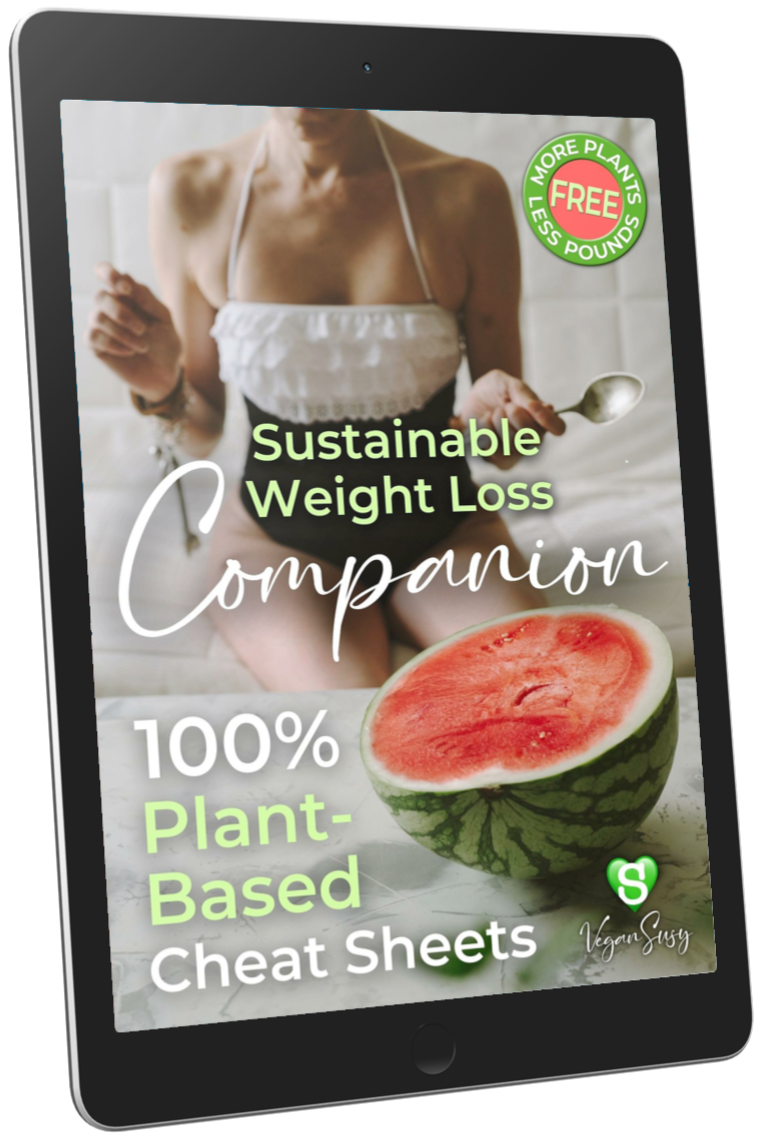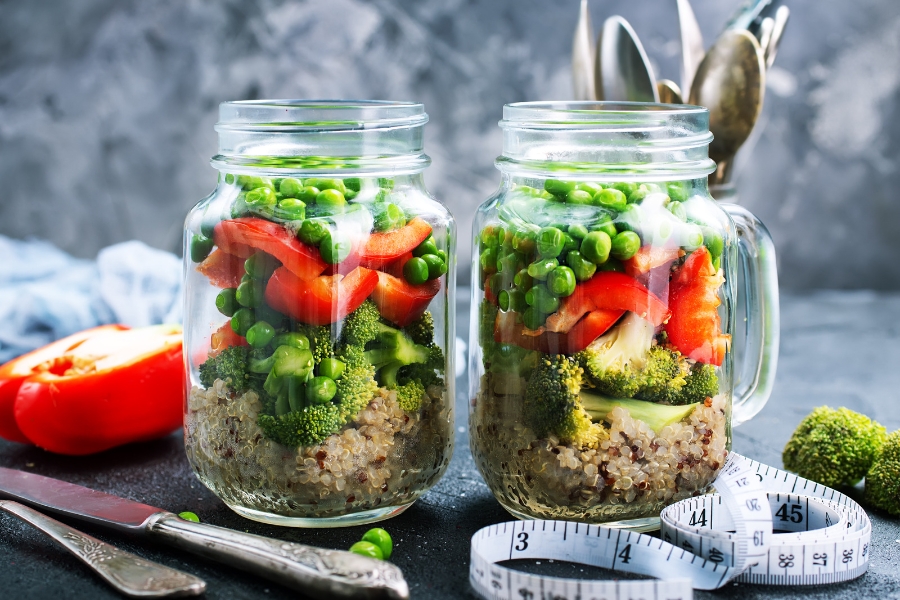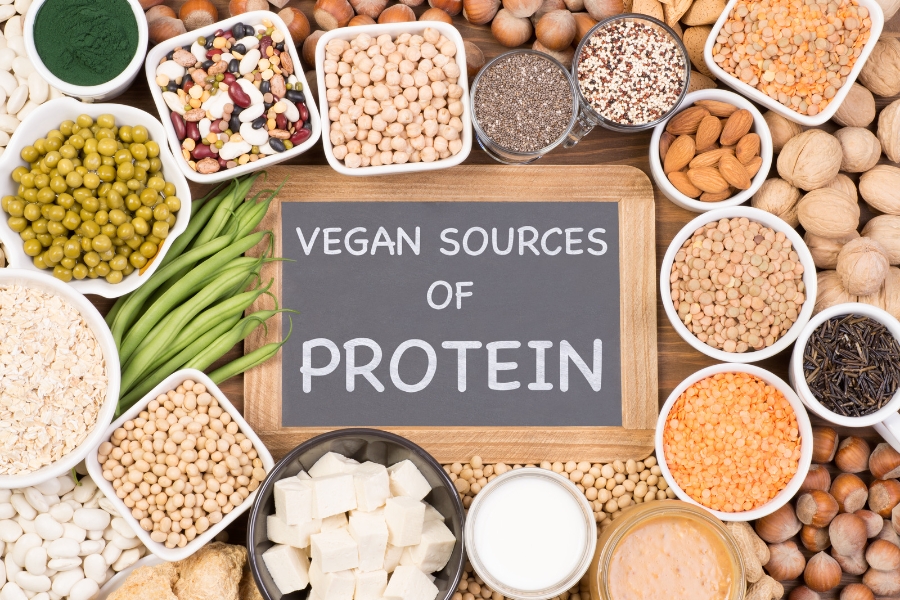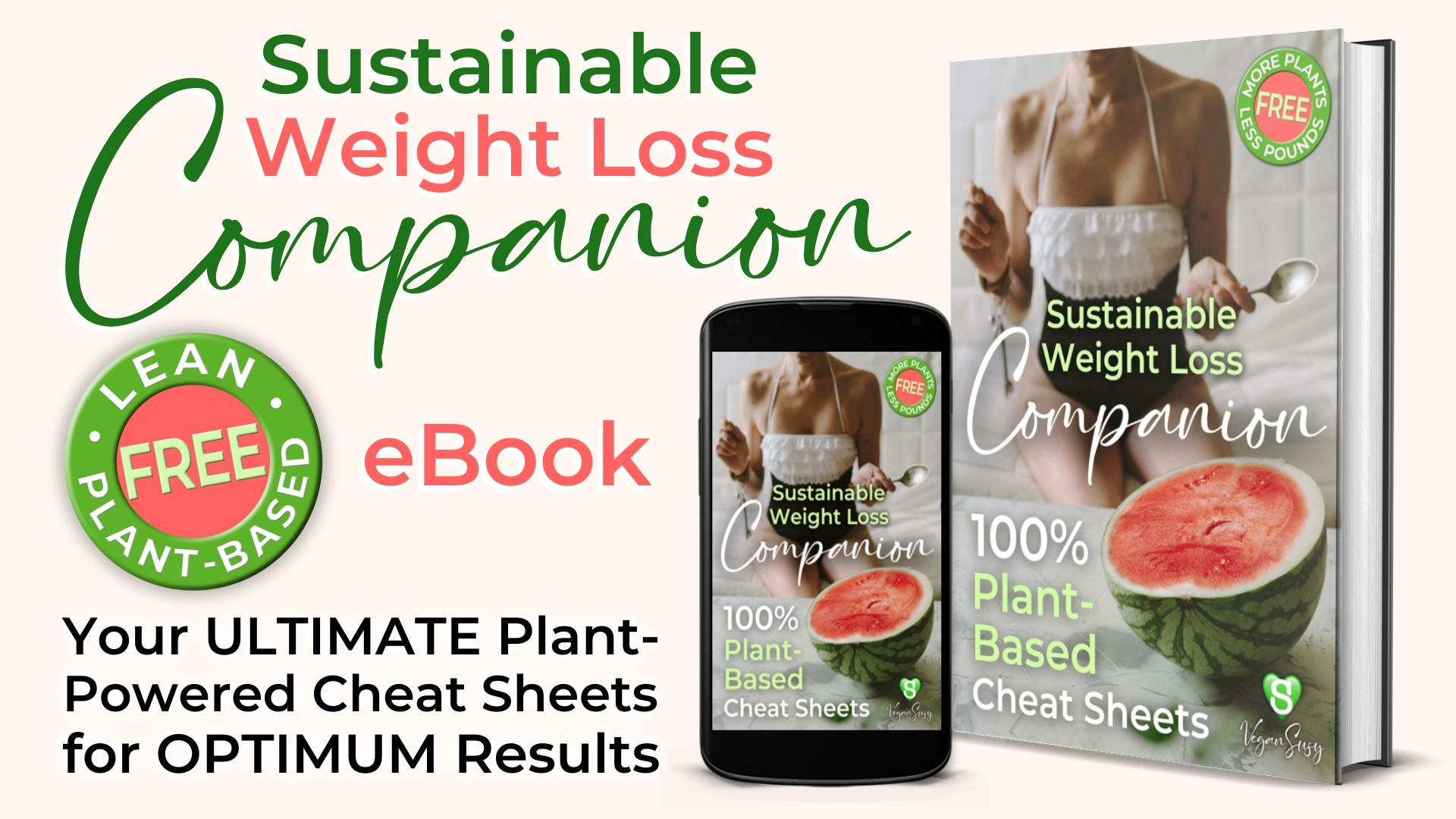
From The Exclusive Collection of FREE Plant-Based Recipes
By Plant-Based Nutrition Professional Chef Susy • Designed For Effortless Weight Loss & Weight Maintenance
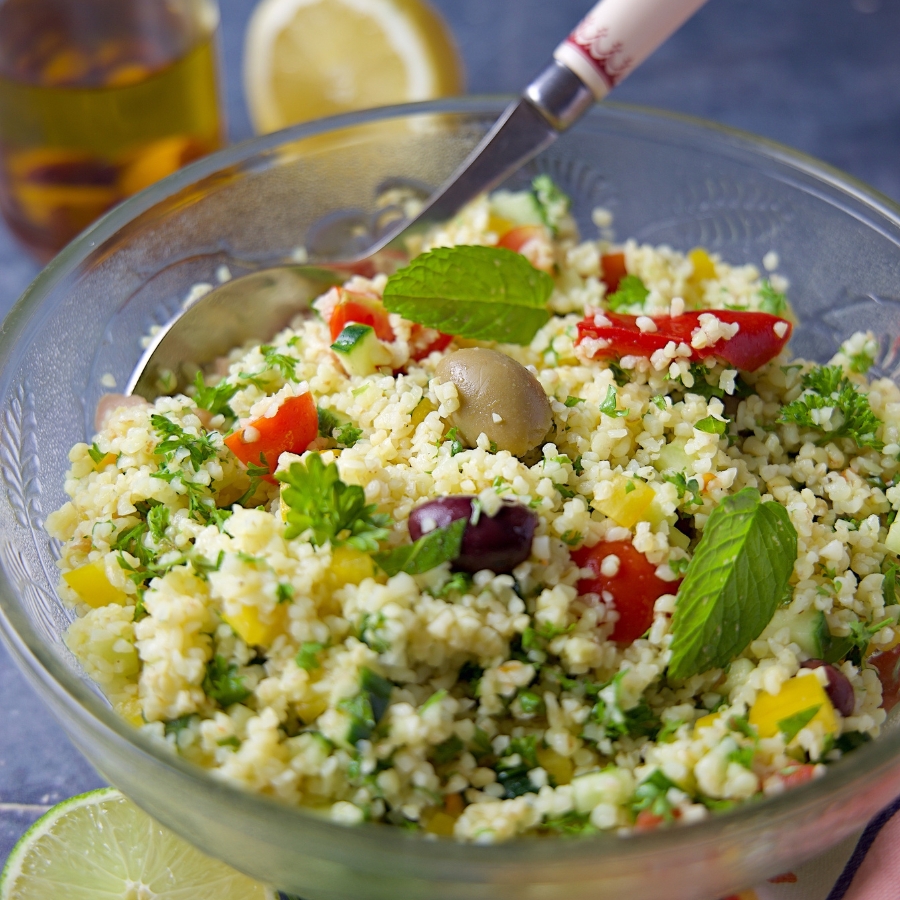
Easy Vegan Tabbouleh Salad
(15-Minute Recipe)
This ain't your average salad. Whip up this easy vegan tabbouleh in just 15 minutes for a satisfying lunch, potluck showstopper, or delish side dish. Packed with fresh veggies, herbs, and a tangy dressing, it's a flavour explosion in every bite.

Prep Time: 15 Mins | Total Time: 15 Mins
Servings: Adjustable
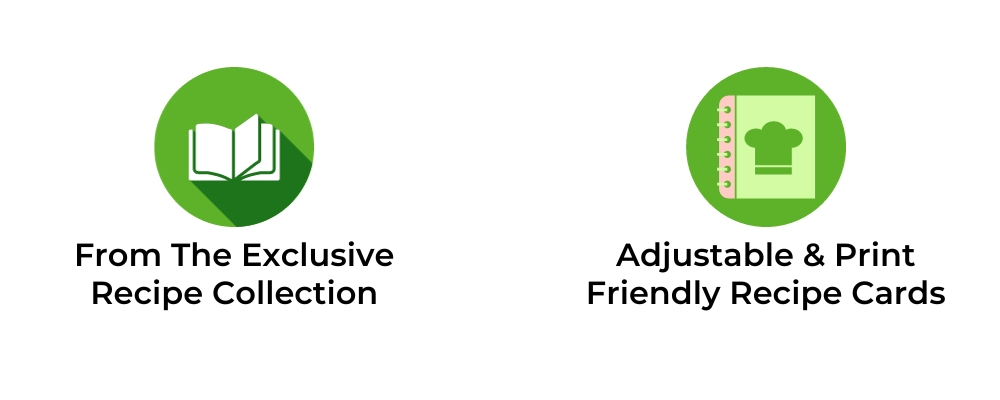
Let's Be Friends!

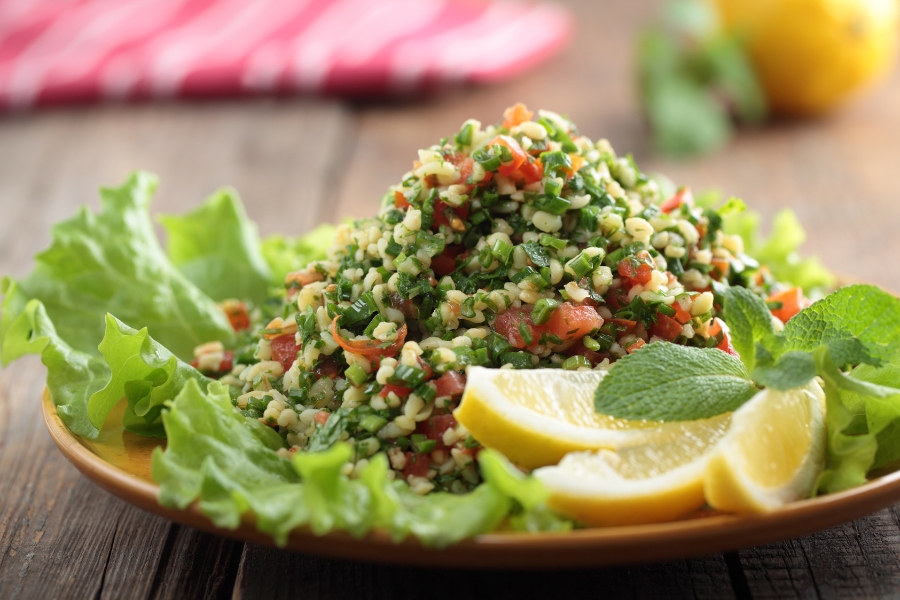
Salads are my thing. I love making salads. Be it a casual lunch or formal dinner, it’s a must on the menu. And when it’s something as yummy as the vegan tabbouleh salad, there’s no way I’m skipping out on it. It’s nutritious, delicious, and so easy to make.
Want the recipe? Here you go!
Table of Contents
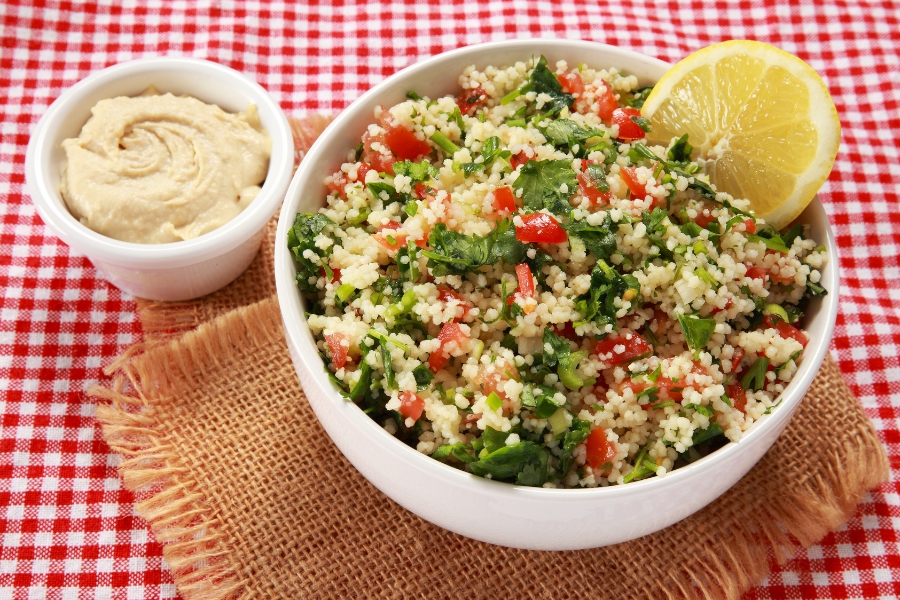
Why This Recipe Works
It’s Amazing
Do you have a go-to recipe when asked to bring a salad to a party? The plant-based tabbouleh salad is mine (actually, I have three—the others are my low-fat, creamy vegan coleslaw and my Mexican mango salad). And this is one of the recipes where, whenever I make it, I’m always asked for the recipe. So here’s a heads up: be prepared to share the recipe card whenever you prepare this scrumptious salad!
Tastes Heavenly
Pairing a savoury base with a zesty dressing, this tabbouleh recipe serves as an absolute delight to the tastebuds. It’s really one of the best salads I’ve tried until now—and there’s no reason why you wouldn’t fall in love with it.
Aids Weight-Loss
The vegan tabbouleh salad is a no-oil recipe that helps aid weight loss by minimising calories. It includes fibre, a key ingredient in weight management. Fibre keeps you full for longer and also boosts metabolism. The recipe also includes ingredients like bulgar wheat and vegetables that are low in calories but high in volume and nutrients. So you can enjoy a satisfying meal without overstepping your daily calorie limit.
So Versatile
Brunch, lunch, dinner, side dish or snack, this salad can be enjoyed at any time of the day. And you can pair it with anything: stuffed vegetables, grilled tofu, pita bread, mezze platter, muhammara—you name it!
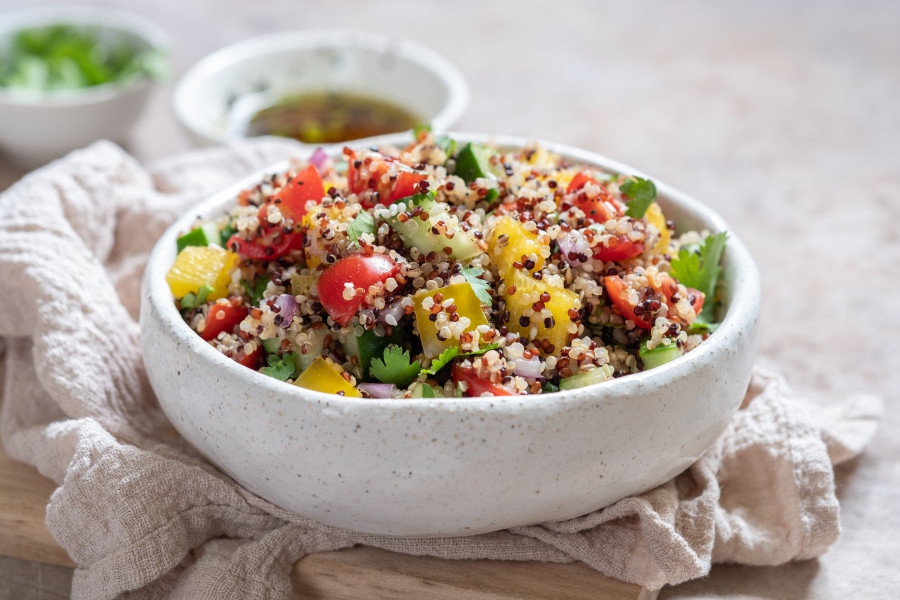
Ingredients For the Plant-Based Tabbouleh Salad
Bulgur wheat. Bulgur (aka bulgar) will be the grain portion of the salad. It has a nutty and slightly chewy texture. Tip: Couscous works too, but it has a slightly different texture.
Stock cube. The secret ingredient. It adds a savoury depth that replicates the taste of vegetable broth. Tip: You may use pre-made vegetable broth instead of a cube for more control over sodium content.
Onion. I like using green onion for a mild taste. They’re also a great source of Vitamin C.
Tomato (diced small). Fresh tomatoes add more colour and texture to the salad. I used Roma tomatoes because they’re not too juicy and have fewer seeds.
Cucumber (cubed small). Again, cucumbers are for a refreshing taste and a vibrant colour. I recently learned from a Lebanese reader that cucumbers are uncommon in tabbouleh. So you can also skip it if you want, but it tastes great.
Red or yellow pepper (cubed small). Red peppers are slightly sweeter than yellow peppers. You can use either. The purpose is to add a touch of sweetness. The recipe can also do without this ingredient.
Olives + olive brine. Brings a salty element to balance the rest of the flavours. I used Kalamata olives because I wanted a strong flavour. You may use Castelvetrano olives if you want a milder one.
Salt & pepper. Pulls together all other flavours.
Dressing
Fresh limes and lemons. Provides a bright and tangy citrus base to the dressing. I always say, and I will say it again, use freshly squeezed juice for the best flavour.
Apple cider vinegar. Adds a hint of acidity to the dressing.
Fresh parsley. Offers a peppery and herbaceous taste—a key element in tabbouleh.
Fresh mint. Provides a refreshing & cooling taste that complements parsley. I love any excuse to use up the mint that takes over my kitchen herb garden every year. And now that it’s just starting to pop off, this recipe was a must.
Cayenne pepper. Adds a touch of heat to the dressing.
Himalayan pink salt. Enhances all the other flavours in the dressing.
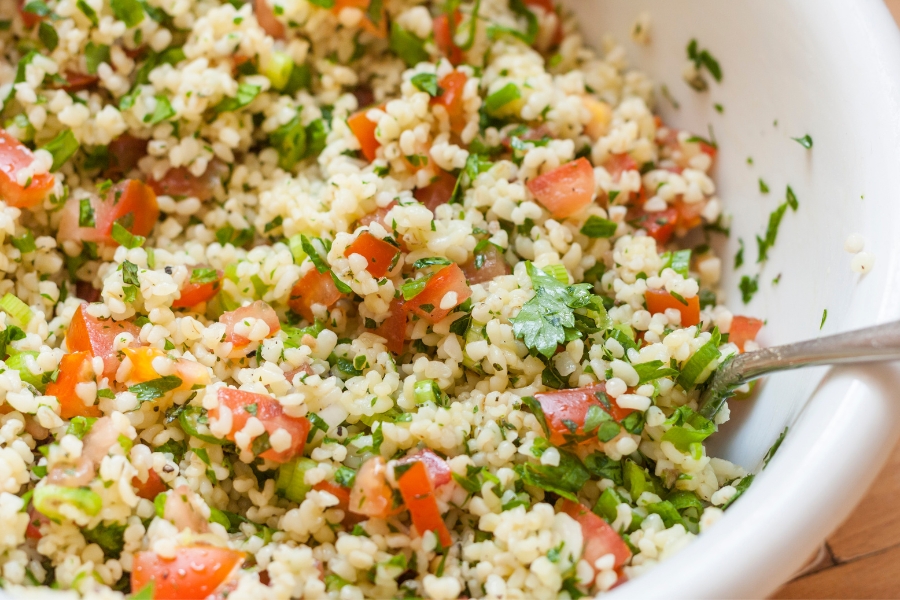
How to Make the Vegan Tabbouleh Salad
Cook the bulgur wheat or couscous. Follow the package instructions for cooking your chosen grain. Crumble the vegetable stock cube into the cooking water for extra flavour. Once cooked, drain the bulgur wheat (or couscous) and let it cool completely.
Prepare the vegetables. While the bulgur wheat cools, finely chop the onion. Dice the tomato, cucumber, and optionally, the red or yellow pepper, into small cubes.
Combine the salad base. Combine the cooled bulgur wheat (or couscous), chopped vegetables, and olives in a large bowl.
Make the dressing. In a separate bowl, whisk together the freshly squeezed lime and lemon juice, apple cider vinegar, olive brine, chopped parsley, mint, black pepper, and a pinch of cayenne pepper and salt.
Assemble the salad. Pour the dressing over the salad base and toss gently to coat all the ingredients evenly. Taste and adjust seasonings as needed.
Serve and enjoy. Serve your vegan tabbouleh salad chilled or at room temperature. It tastes amazing on its own, but you can also pair it with other Mediterranean or Middle Eastern dishes.
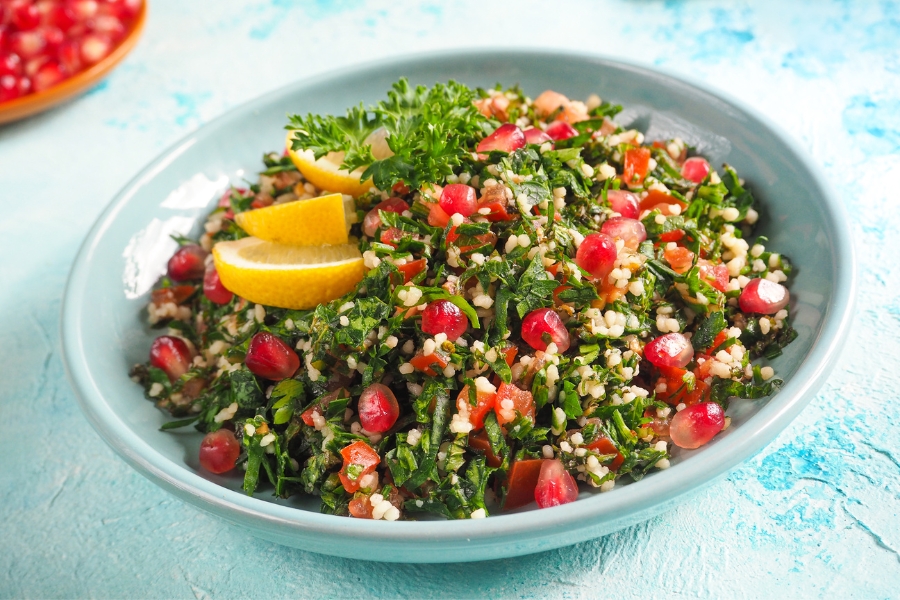
Variations, Ideas & Notes
You might not have a particular ingredient available at home, or perhaps you don’t like the taste of a specific ingredient—so here are some simple alternatives to try.
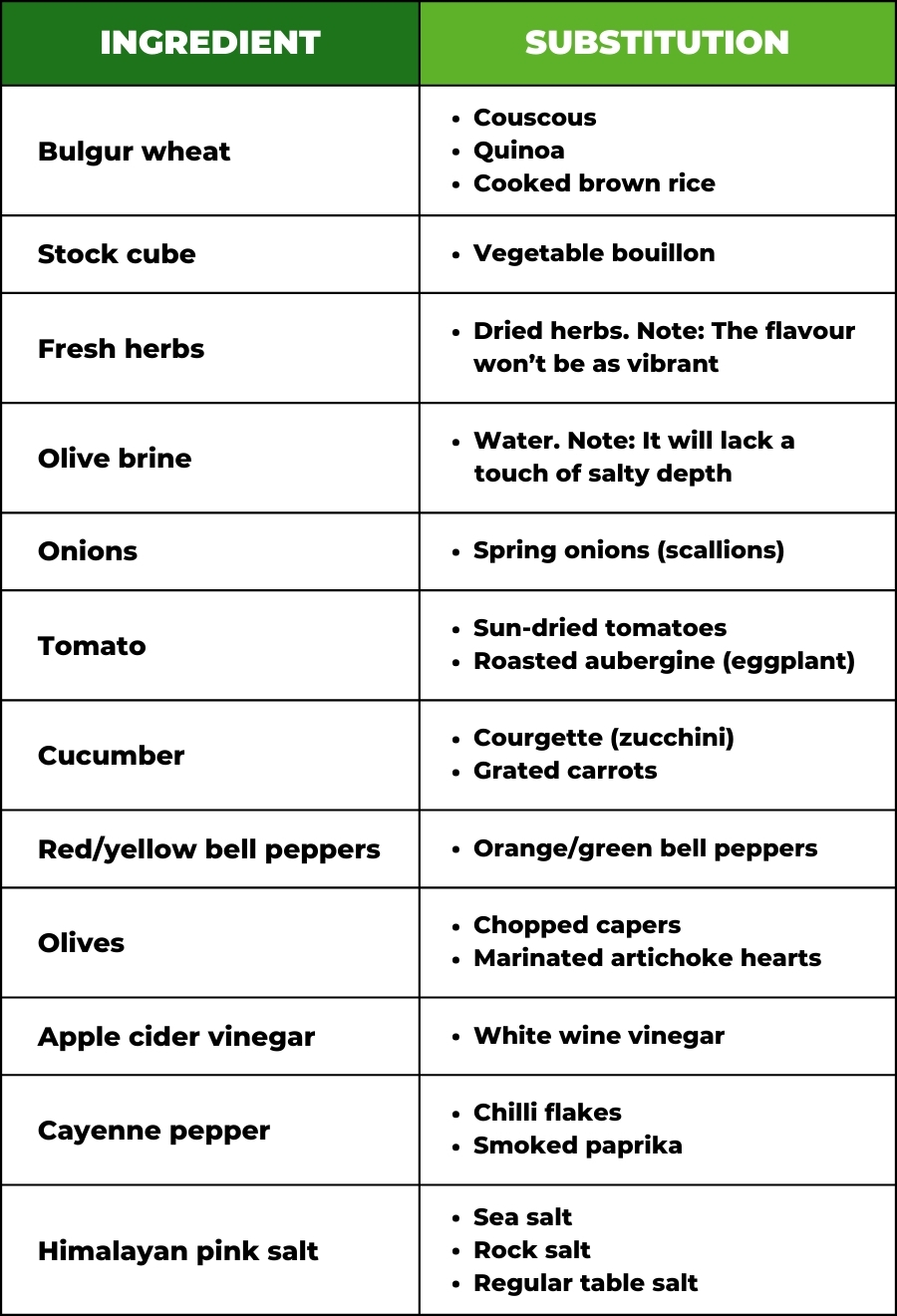
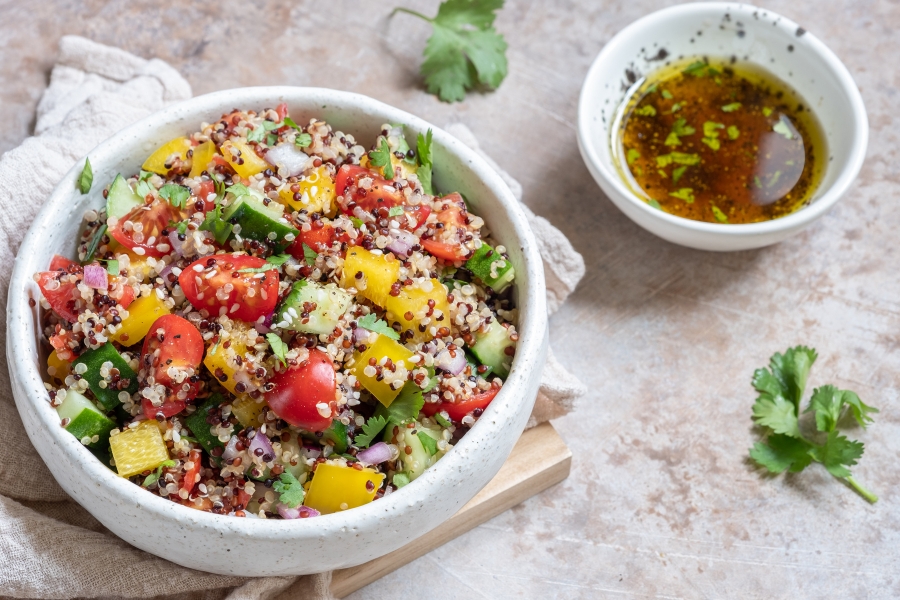
Pro Tips For This Recipe
Rinse bulgur wheat with cold water after soaking to remove excess starch for a fluffier texture.
If using couscous, remember that it becomes mushy if overcooked. So make sure to follow the package instructions closely.
Allow the bulgar wheat (or couscous) to fully cool down before mixing the vegetables.
Soak sliced onions in cold water for 10 minutes to reduce their sharpness.
For a different flavour profile, try using roasted red peppers.
For extra heat, add more cayenne pepper or finely chopped red chillies.
For less heat, swap cayenne pepper for dried chilli flakes or smoked paprika
Experiment with different types of sea salt or Himalayan pink salt for a touch of variety.
Dice the vegetables into small, equal pieces to distribute the flavour evenly throughout the salad.
Toss the salad ingredients together gently to avoid crushing the vegetables or breaking down the grains.
If you’re making the tabbouleh salad when tomatoes are not in season, cherry tomatoes are your best bet.
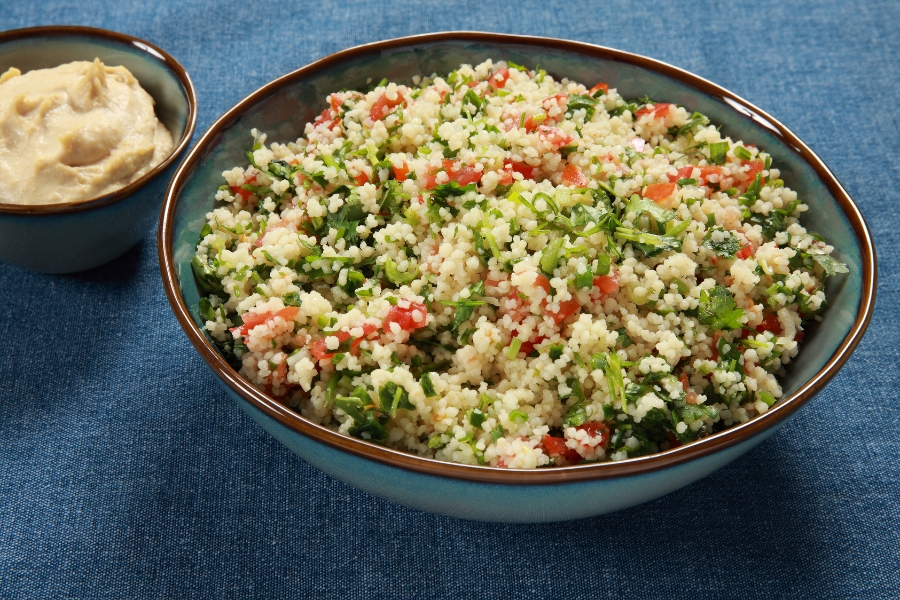
Frequently Asked Questions
How to serve tabbouleh salad?
Tabbouleh is super versatile. It makes the perfect idea for a light lunch, a potluck contribution, and a refreshing side dish.
Here are some of my favourite ideas for serving plant-based tabbouleh salad—
Filling for breakfast burritos or quick and easy bean burritos
Grilled or roasted vegetables
Air fried tofu
It also tastes great with dips and spreads, like vegan cheese sauce, salsa, hummus, and spicy satay sauce.
How to store vegan tabbouleh salad?
Vegan tabbouleh stays fresh in a sealed container stored in a refrigerator for up to 4 days. However, I’d recommend keeping the salad separate from the bulgar until ready to eat. Prepare the dressing right before mixing the ingredients.
If storing assembled vegan tabbouleh salad, know that it will stay fresh for up to 3 days, but the bulgar might become a bit softer as it absorbs the dressing.
How to refresh leftover tabbouleh?
If your leftover tabbouleh salad feels too dry, add a small amount of extra virgin olive oil and a squeeze of fresh lemon juice to refresh the taste. Bonus points if you top it with chopped fresh mint or parsley.
How to make plant-based tabbouleh salad more filling?
While tabbouleh salad is amazing on its own, you can pair it with other protein-rich foods to make it more fulfilling. Examples include lentils, cooked chickpeas, shredded tofu, and tempeh crumbles.
How to avoid watery tabbouleh?
There are no hard and fast rules for the ingredients. However, some vegetables, like spinach or raw lettuce, can make the salad too watery. Even super juicy tomatoes can make the consistency a bit too runny. So it’s best to avoid such options for the perfect salad texture.
Can I freeze tabbouleh salad?
Unfortunately, tabbouleh salad doesn’t do well with freezing. The vegetables and bulgur wheat (or couscous) lose their texture and become mushy upon thawing.
Can I make the plant-based tabbouleh salad gluten-free?
Yes. Simply replace the bulgar wheat with quinoa to enjoy an equally delicious, gluten-free tabbouleh salad.
Can I use pre-cooked bulgur wheat/couscous?
Absolutely. Using pre-cooked bulgur wheat or couscous saves time. You can easily find pre-cooked options in the grain section of your local grocery store. Just be sure to rinse them with cold water before adding them to the salad to prevent them from becoming mushy.
Is tabbouleh a good source of vitamins and minerals?
Yes. Vegan tabbouleh is packed with nutrients.
Bulgur wheat is a good source of fibre and complex carbohydrates.
Vegetables provide vitamins, minerals, and antioxidants.
Fresh herbs add essential vitamins and minerals.
If you made the recipe, make sure to tag me on Instagram @vegan.susy
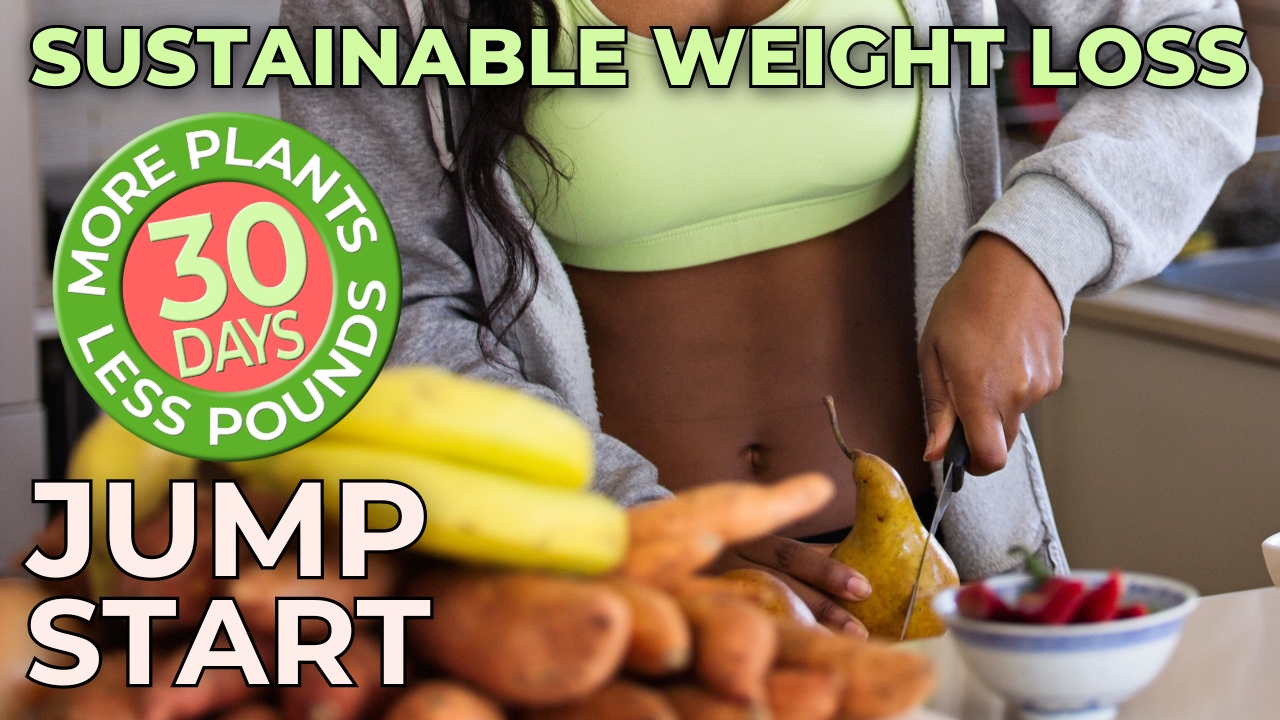
More Free Resources
Unlock Your Transformation Today!
Empower Yourself: Embark on a Delicious Fat Loss Adventure

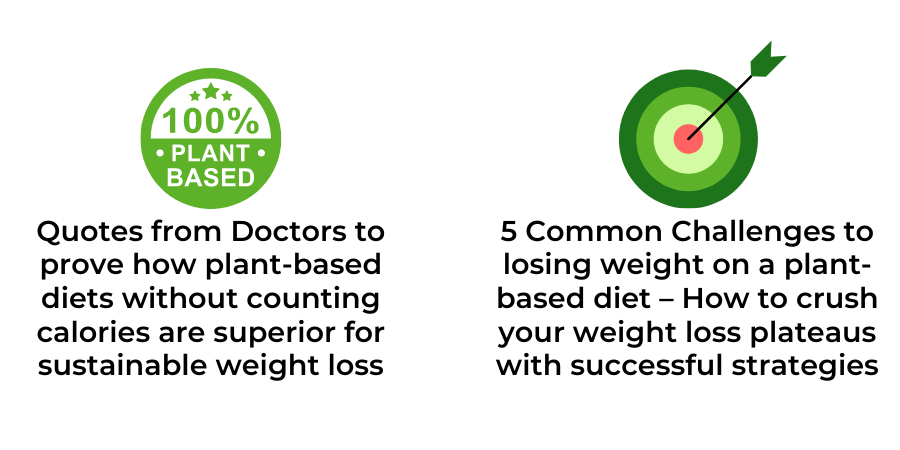
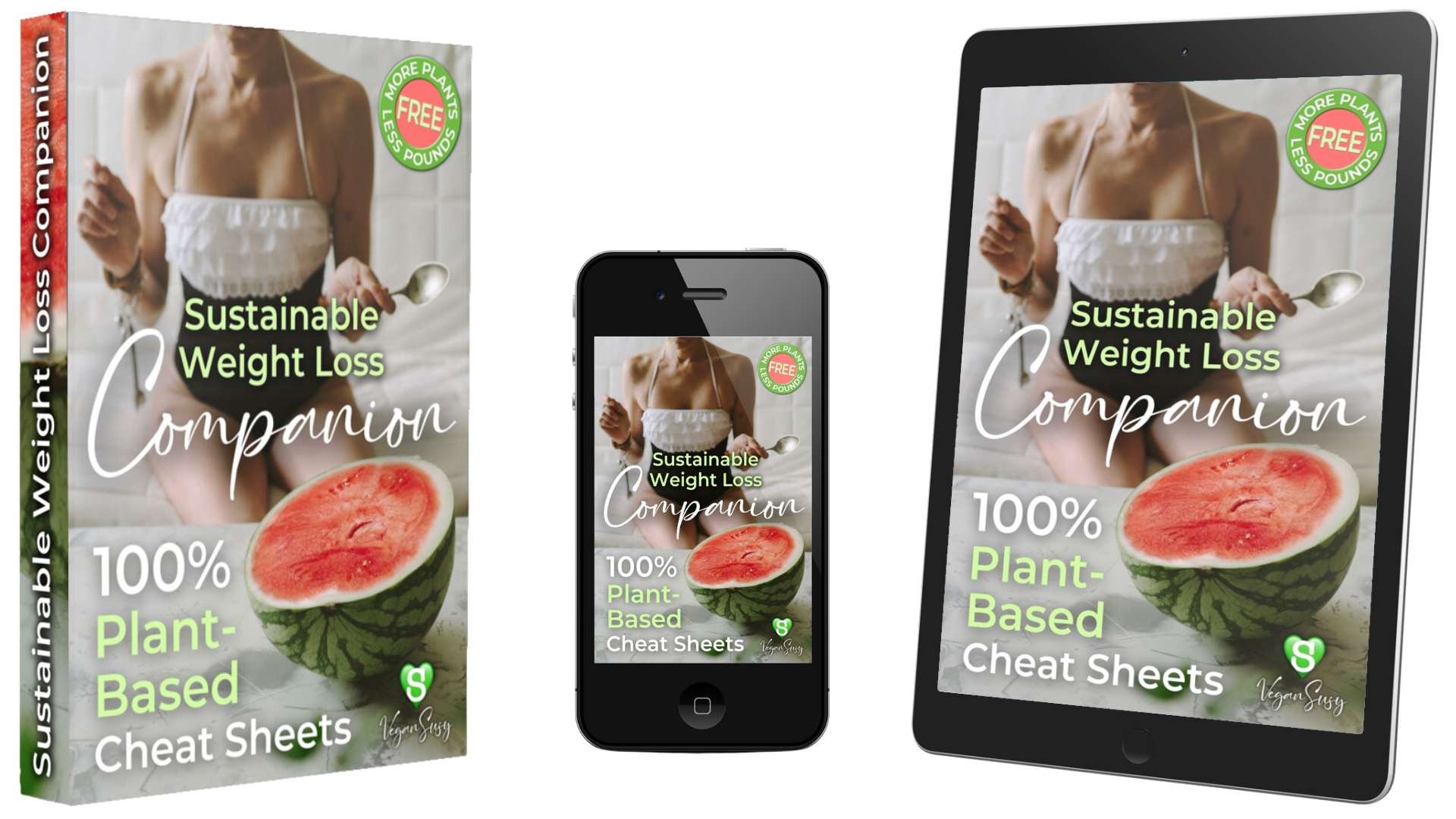
🍉 Get Ready to Jump Start Your Fitness Goals AND DISCOVER A HEALTHIER YOU!
🍉 Let's Make Your Fat Loss & Optimum Health Journey a Delicious Success Story!
🍉 Get The FREE Sustainable Weight Loss Companion eBook and CHEAT SHEETS!
© 2025 VeganSusy Ltd. All Rights Reserved




